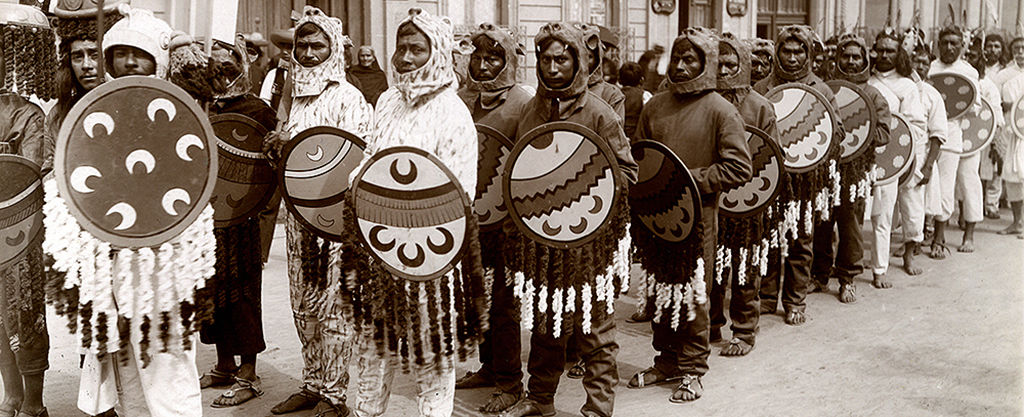
Description
This unit aims to critically examine the ways colonization shaped Mexico, particularly in the years leading up to the Mexican Revolution. By analyzing the colonial system of encomienda (a form of slavery of indigenous people and a racialized hierarchy of society) and its postcolonial manifestation of casta (evolved from encomienda as a racial caste system), students will be able to understand the complex and racialized power dynamics contributing to the increased poverty and disenfranchisement of peoples across Mexico. Students will start to understand the implications that centuries of oppression and European colonization led to, and later connect these factors to sustained and organized resistance by the Mexican people (the Mexican Revolution). Beyond seeing the Mexican Revolution as an inevitable reaction of the masses to their poor situation in society (aka a continuation of norming the poor and people of color as lacking agency/ voice/ organization), students will note both the shared resistance among indigenous, Black and female actors in the Revolution, as well as the agentic power of important individual revolutionaries. By the end of the unit, students will use this knowledge to research the life of an individual revolutionary of their choosing, prompting their curiosity and creativity as historians and makers.
Date Range: 1450-1924
Grade Levels: 9-12
Country: Mexico
Course Subjects: Art & art history studies; indigenous studies; Latin American studies; women & gender studies; world history studies
Topics: Mexican history; the Mexican Revolution; Spanish colonization; Latin American social and political revolutions; indigenous organizing; the Latin American left
Teaching Time Frame: 3, 90 minute lessons
Guiding Question
In what ways might colonization lead to rebellion?
Supporting Questions
Lesson 1: How did colonialism and post-colonial structures impact Mexico? (specifically examining the casta and encomienda system)
Lesson 2: What are the social, political and economic factors that pushed the Mexican people to revolution in 1910?
Lesson 3: How did people of different backgrounds organize?
Summative Activities
Students will build on the assessment task from Lesson 3: Pick one revolutionary figure and select one of the following activities:
- Painting is Worth 1000 Words: Students will create a painting or picture that features your revolutionary and tell the story behind it. Create a piece of art (drawing, painting, collage) that represents your revolutionary (portrait, battle scene, etc)
- Radio show/Podcast: Students put together a script about a moment featuring their revolutionary within the Mexican Revolution and put together a radio show/interview/podcast reporting on the incidents.
- Stories in Song: Students finds song based around the their revolutionary and discuss the songs within those stories.
- Write a creative story about them. You can pick from the following prompts. Aim for 300-500 words:
- Imagine you are the revolutionary leader you chose (Zapata/ Villa/ Herrera/ Guerrero) fighting in the Mexican Revolution.
- Write a letter to a close friend to describe how the fighting is going.
- Imagine you are the revolutionary leader you chose (Zapata/ Villa/ Herrera/ Guerrero) fighting in the Mexican Revolution. You are about to enter a battle the next day.
- What would you write in your diary the night before?
- Write a poem on your chosen revolutionary (Zapata/ Villa/ Herrera/ Guerrero).
- Choose another prompt with teacher’s approval.
- Imagine you are the revolutionary leader you chose (Zapata/ Villa/ Herrera/ Guerrero) fighting in the Mexican Revolution.
Relevant Teaching Standards
TEKS Guidelines
- World History
- (c)-(6)-(A) – Compare the major political, economic, social, and cultural developments of the Maya, Inca, and Aztec civilizations and explain how prior civilizations influenced their development.
- c)-(8)-(B) – Student understands the causes and the global impact of the Industrial Revolution and European imperialism from 1750 to 1914. The student is expected to identify the major political, economic, and social motivations that influenced European imperialism.
- (c)-(26)-(A) – Identify significant examples of art and architecture that demonstrate an artistic ideal or visual principle from selected cultures.
C3 Framework
- Civics
- D2.Civ.6.9-12. Critique relationships among governments, civil societies, and economic markets.
- History
- D2.His.1.9-12. Evaluate how historical events and developments were shaped by unique circumstances of time and place as well as broader historical contexts.
- D2.His.4.9-12. Analyze complex and interacting factors that influenced the perspectives of people during different historical eras.
- D2.His.8.9-12. Analyze how current interpretations of the past are limited by the extent to which available historical sources represent perspectives of people at the time.
- D2.His.10.9-12. Detect possible limitations in various kinds of historical evidence and differing secondary interpretations.
- D2.His.11.9-12. Critique the usefulness of historical sources for a specific historical inquiry based on their maker, date, place of origin, intended audience, and purpose.
- D2.His.14.9-12. Analyze multiple and complex causes and effects of events in the past.
Lesson Pages
Lesson 1: Colonialism’s Impact on Mexico
Lesson 2: What caused the revolt?
Lesson 3: Shared Resistance in the Mexican Revolution
Downloads
Rights Statement
Creators: Emma Ensign-Church, Graduate Student, Department of Curriculum & Instruction; & Emiliano Guajardo, Graduate Student, Department of Curriculum & Instruction
Date: 2019-05-22
This unit is under a Creative Commons Attribution-NonCommercial-ShareAlike 4.0 International Public License (“Public License”). This license lets others share, remix, tweak, and build upon the work non-commercially, as long as they credit the creators and license their new creations under the identical terms.
